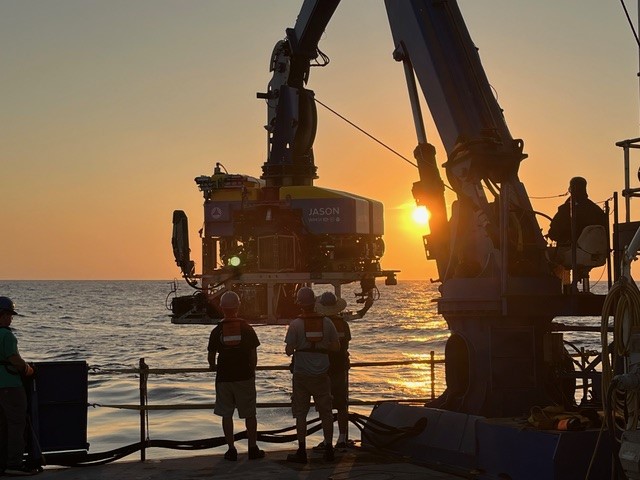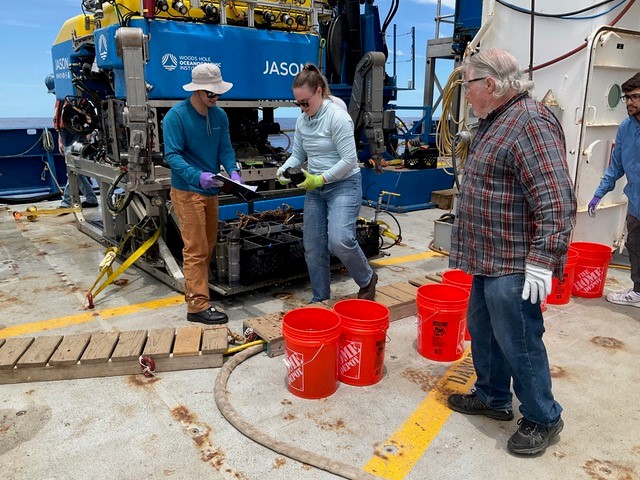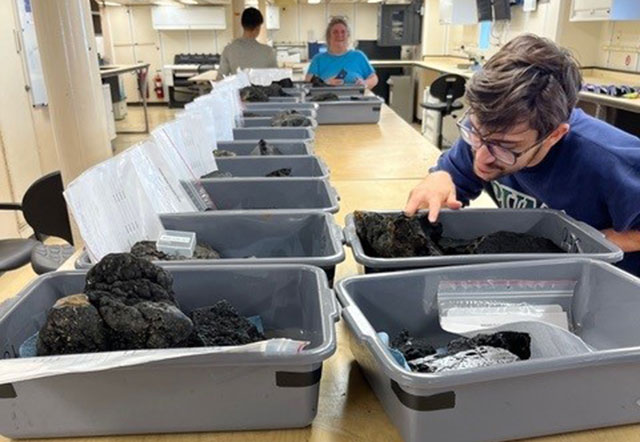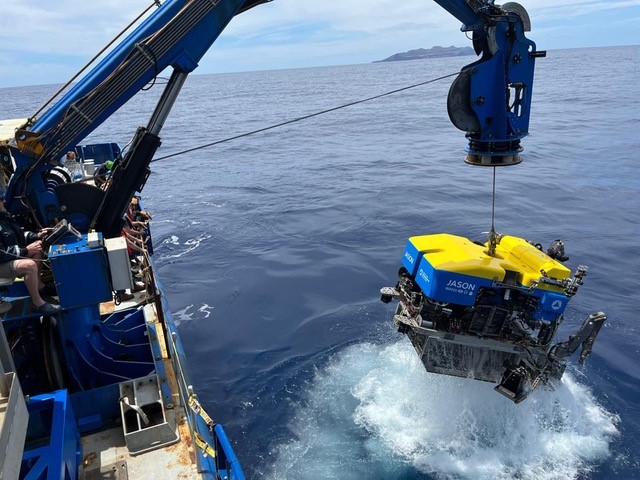First time NDSF user, Katie Kelley, answers some questions about her experience using ROV Jason.
Dr. Katherine Kelley is a professor of Oceanography at the University of Rhode Island and first time NDSF user. We were fortunate enough to ask Katie some questions about her experience using ROV Jason. Katie’s insight and is of tremendous value to new and old users of the facility. Thank you Katie! We hope you are a repeat user in the years to come!
Q: What were the science objectives of you cruise?
A: Our science objectives were to map and sample previously poorly-known seamounts, as well as a failed spreading center, within Mexico’s Revillagigedo Islands, which is a UNESCO World Heritage site and Mexico’s largest national park. The area is home to two large, active volcanic islands, despite no active plate boundary, and our main goal was to evaluate the origins of the ongoing volcanism through geophysical surveys and geochemical studies on the recovered lava rocks.
Q: Was there anything surprising that you discovered?
A: Our sampling campaign turned out to be far more challenging than expected because the rocks we wanted to sample were covered in an unexpectedly thick coating of ferromanganese crust. The crust is a secondary mineral layer that forms on hard rock surfaces very slowly over millions of years. Due to the expected ages of the rocks, we expected perhaps a few millimeters of this crust, but in many cases it was centimeters thick and made it incredibly difficult for Jason pilots to grab or break rock samples for our studies. The pilots on our cruise were incredibly patient and persistent, though, and so the sampling campaign was very successful despite these difficulties.
Q: Have you ever used an ROV in the past?
A: Yes, I have sailed on one cruise of E/V Nautilus previously, using ROV Hercules to explore the young volcanoes in this same area. That cruise provided the inspiration and drive to pursue an NSF project that would allow us to return to the area with Jason.
Q: What was the most impactful aspect to your science of using Jason that will make you use the vehicle again in the future?
A: Our experience with Jason delivered positive impacts from both the technology side (the vehicle itself) and the personnel side (the Jason ops team). For geological work, Jason’s powerful manipulators and large sample capacity were critical in accomplishing our sampling campaign, and the quality of the imagery with the Science camera and also with the forward-looking sonar, were really critical to guiding sampling choices and interpreting the seafloor geology. All of this technology is, however, not so useful without the highly skilled operations team that actually makes everything work.
Q: What was it like to be a first time NDSF user?
A: My experience with NDSF was really great. While I have been out to sea many times in my career, this was not only my first time with NDSF, but also my first experience as chief scientist of any cruise. I greatly appreciated the pre-cruise planning with the Jason group, as this really helped me get oriented to the vehicle, its capabilities, and the reality of how we plan our specific work at sea - as a new user this kind of attention is really important and helpful.
Q: Do you have any tips for future new users of Jason?
A: Every cruise is different, but I do recommend, if PIs can swing it, to do the pre-cruise planning meeting with the Jason team in-person at WHOI instead of over zoom. Meetings like this are really different in person, and I think it’s easier to ask questions in person and really nice to meet face-to-face with some of the people who may be at sea with you in the future. We are fairly local to WHOI, so a group of us drove over for the meeting while others attended by zoom. Jason was under maintenance at the time, so Scotty gave a “tour” of the vehicle. I found this was really informative and helpful.




